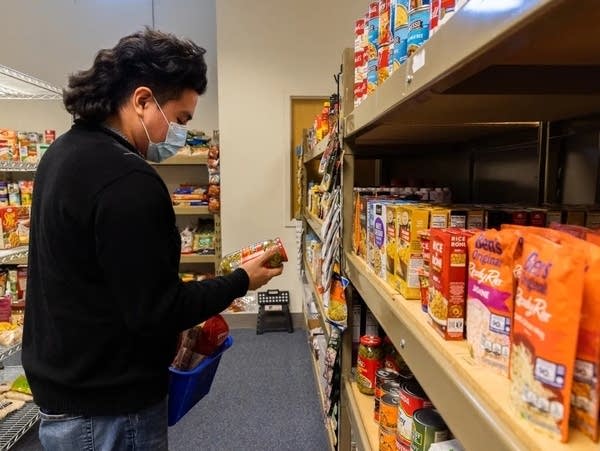Hunger prevents Minnesota students from enrolling in community college

Pablo Aguilar, a 19-year-old student worker at North Hennepin Community College's food cupboard, browses items on the shelf. He likes to take special sauces home for his dad, who enjoys cooking. Aguilar observed that food insecurity during the pandemic caused many of his friends not to enroll in college at all. Some of his high school classmates went straight into the workforce or joined the army.
Jaida Grey Eagle | Sahan Journal
Go Deeper.
Create an account or log in to save stories.
Like this?
Thanks for liking this story! We have added it to a list of your favorite stories.


